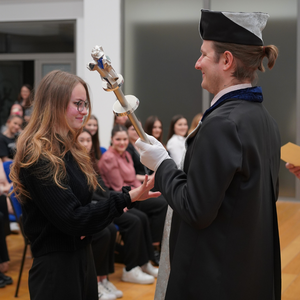Basic Information
Area
The Czech Republic is historically divided into three regions: Bohemia, Moravia and a part of Silesia. The total area is 78,866 square kilometers and the country’s population is around 10.6 million people. The capital city is Prague, with 496 square kilometers area and 1.3 million inhabitants, and there are 5 other metropolitan cities with a population exceeding 100,000 – Brno, Plzeň, Olomouc, Ostrava and Liberec.
The Czech Republic shares borders with Germany, Poland, Austria and Slovakia. The country is surrounded by extensive mountain ranges, which form most of the border – the Krkonoše Mountains in the north-east; the Krušné Hory Mountains in the north-west; the Šumava Mountains in the west; the Hrubý Jeseník Mountains and the Moravian-Silesian Beskydy Mountains in Moravia. Many important European rivers (the Labe, Vltava, Odra, Morava, etc.) flow through the country.
Climate and weather
The climate in Prague, as well as in the whole Czech Republic is temperate, a mixture of oceanic and continental. Winters are rather cold, summers warm. The average temperature in July is 19,4 oC, and in January it goes down to -1,5 oC. However, extreme temperatures like +30 oC or –20 oC may also be experienced during the year.
The weather is very variable; therefore a full range of clothing may be required. For the actual information on weather forecasts please visit Prague weather forecast.
Language
The official language is Czech, a very beautiful, yet quite, difficult to learn Slavic language. In main tourist attractions English/German/Russian is spoken. Nevertheless, you might find it useful to take a look at the mini phrasebook.
Public holidays
State holidays:
- 1st of January – Day of Renovation of the Independent Czech State
- 8th of May – Liberation Day (1945)
- 5th of July – Cyril and Methodius Day – the Slavic Christianity Prophets
- 6th of July – Master John Hus burning at the stake (1415)
- 28th of September – Day of the Czech Statehood
- 28th of October – Independent Czechoslovak State Proclamation Day (1918)
- 17th of November – Day of a Struggle for Liberty and Democracy
Other holidays:
- 1st of January – New Year’s Day
- Easter Monday
- 1st of May – Labour Day (May Day)
- 24th of December – Christmas Eve
- 25th of December – Christmas Day
- 26th of December – Boxing Day
Currency – currency exchange
- The main currency in Czech Republic is Czech Crown (Česká Koruna)
- Czech Crown – Czech symbol “Kč”, international symbol “CZK”
- 1 CZK = 100 haléř, Czech symbol “h”
- Coins: 1, 2, 5, 10, 20, 50 CZK
- Banknotes: 100, 200, 500, 1000, 2000, 5000 CZK
- Current exchange rates
In most shops credit cards are accepted; In some shopping centres it is not unusual to pay also in Euro or US dollars – the change will be returned in CZK.
Tipping
Like almost everywhere in the world, tipping is a usual practice in the Czech Republic too. The international standards (10-12 %) is of course welcomed, no waiter will look weirdly at you, if you for example round off a bill of 285 CZK to 300 CZK.
Postal service
Postal service is well represented in Prague. You can find a post office starting from the airport up to the Prague Castle. The orange post office boxes in Prague are emptied every day.
- Domestic Letters/Postcards: 19 CZK
- International Letters/Postcards: Europe 35 CZK – Overseas CZK
The busiest and biggest post office is Main Post Office, Prague 1 (Česká pošta – Pošta Prague 1 – Hlavni pošta) Jindřišská 909/14, 110 00 Prague 1, open from Monday to Friday (2:00 am - 12:00 pm).
Important Phone Numbers
- European Emergency Line: 112
- Czech Republic National Police: 158
- Prague Municipal Police: 156
- Czech Republic Emergency Rescue Service: 155
- Czech Republic Fire Emergency: 150
- Information Service of Telephone Numbers in the Czech Republic: 1180
- Information Service of Telephone Numbers Abroad: 1181








